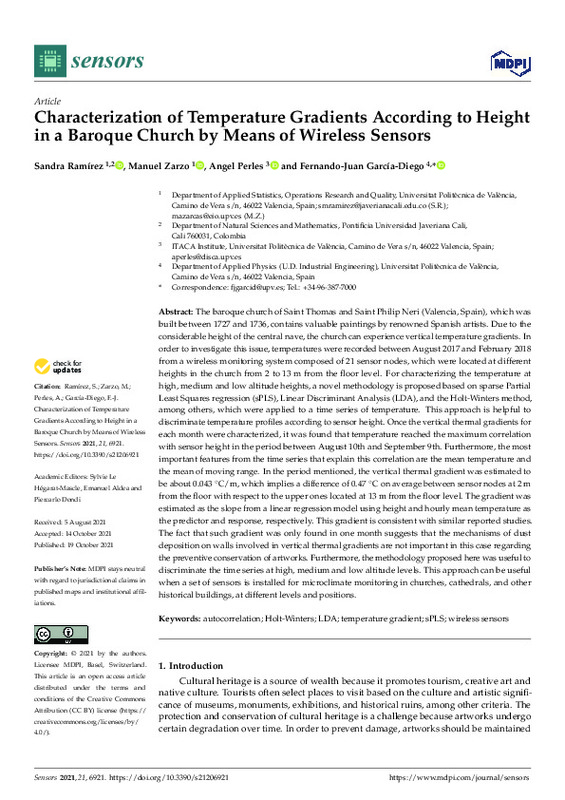JavaScript is disabled for your browser. Some features of this site may not work without it.
Buscar en RiuNet
Listar
Mi cuenta
Estadísticas
Ayuda RiuNet
Admin. UPV
Characterization of temperature gradients according to height in a baroque church by means of wireless sensors
Mostrar el registro completo del ítem
Ramírez, S.; Zarzo Castelló, M.; Perles, A.; García Diego, FJ. (2021). Characterization of temperature gradients according to height in a baroque church by means of wireless sensors. Sensors. 21(20):1-35. https://doi.org/10.3390/s21206921
Por favor, use este identificador para citar o enlazar este ítem: http://hdl.handle.net/10251/182569
Ficheros en el ítem
Metadatos del ítem
| Título: | Characterization of temperature gradients according to height in a baroque church by means of wireless sensors | |
| Autor: | Ramírez, Sandra | |
| Entidad UPV: |
|
|
| Fecha difusión: |
|
|
| Resumen: |
[EN] The baroque church of Saint Thomas and Saint Philip Neri (Valencia, Spain), which was built between 1727 and 1736, contains valuable paintings by renowned Spanish artists. Due to the considerable height of the central ...[+]
|
|
| Palabras clave: |
|
|
| Derechos de uso: | Reconocimiento (by) | |
| Fuente: |
|
|
| DOI: |
|
|
| Editorial: |
|
|
| Versión del editor: | https://doi.org/10.3390/s21206921 | |
| Coste APC: |
|
|
| Código del Proyecto: |
|
|
| Agradecimientos: |
|
|
| Tipo: |
|









